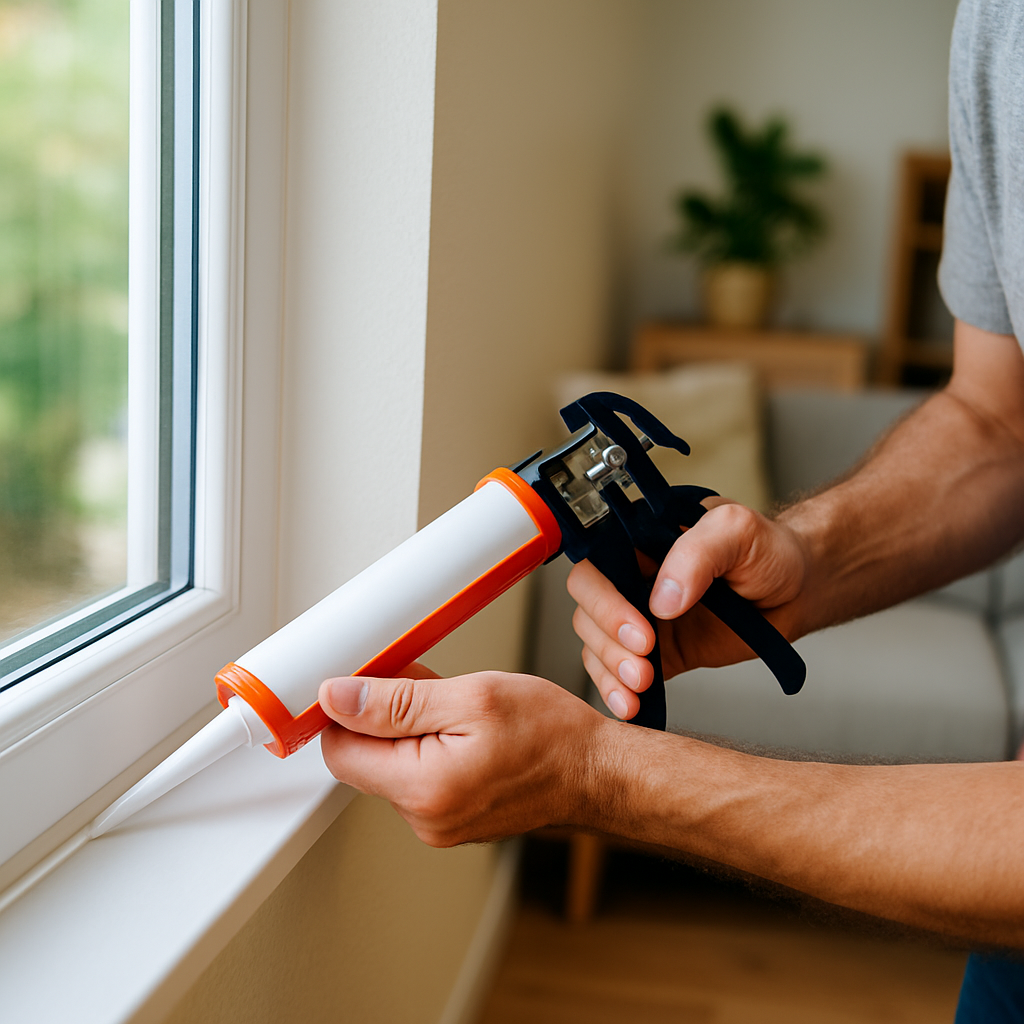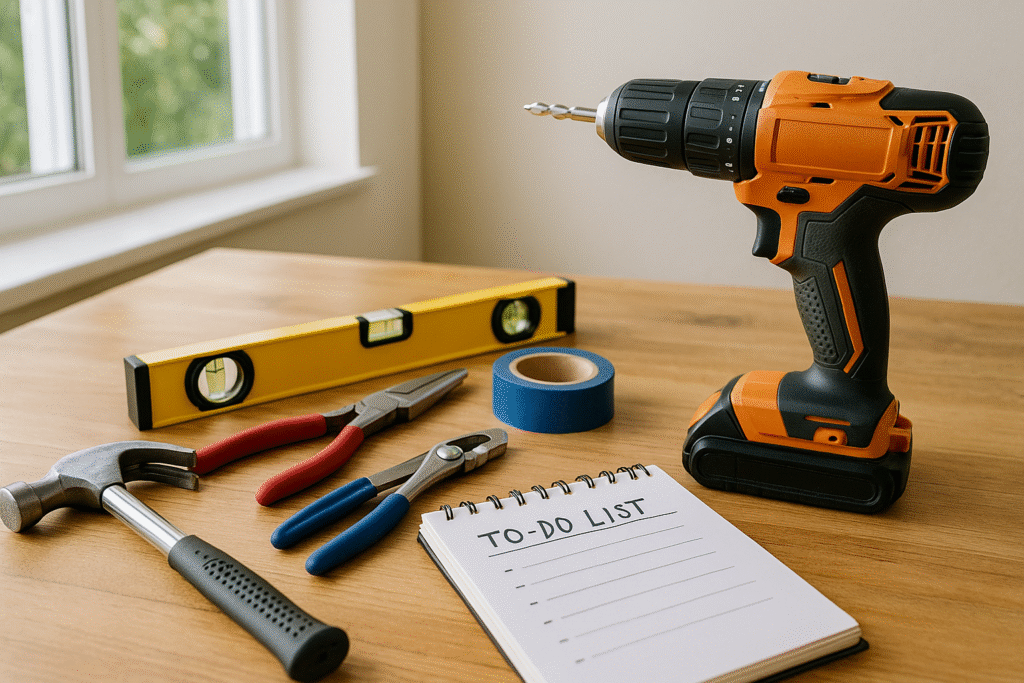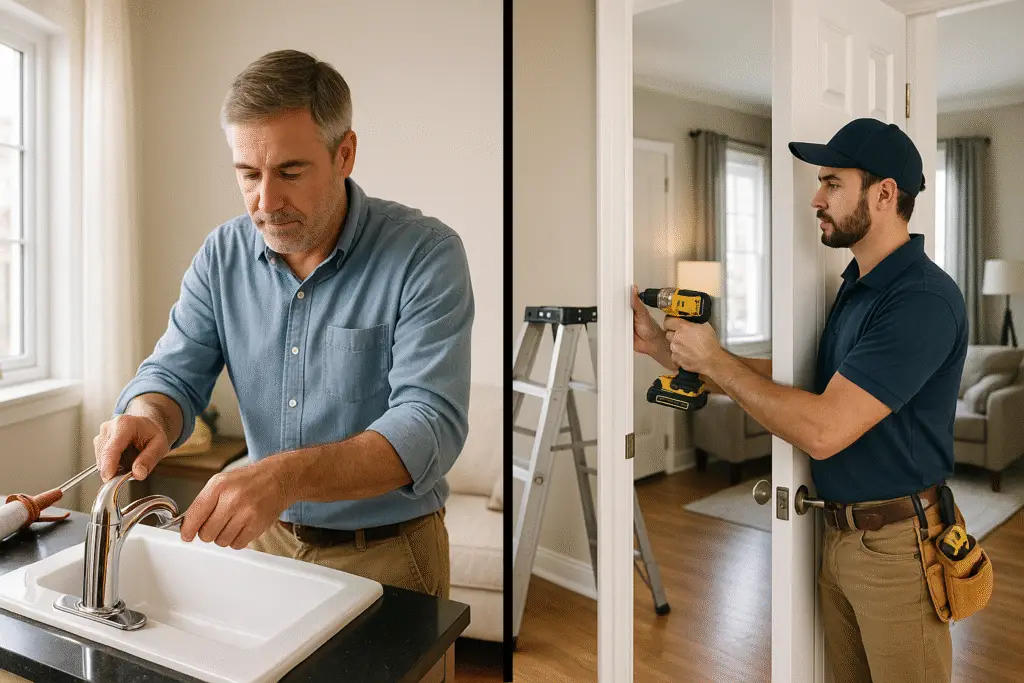Your toilet’s leaking. Again. You’re holding a wrench and watching a how-to video… but should you actually be doing this?
If you own a home, you know the drill: something always needs fixing. And while DIY home repairs can save you serious money, they can also cost you big if you bite off more than you can chew. So how do you know which jobs are safe to tackle yourself, and which ones you should hand off to a pro?
Are You Saving Enough for Repair Costs?
Use our free Home Repair Reserve Calculator to see how much you should be setting aside for your home each year.
How to Know if a Repair Is DIY-Friendly
Before you pull out the toolbox, consider your answers to five key questions:
- Could this be dangerous if I get it wrong?
- Do I fully understand how to do this—and what could go wrong?
- Do I have the right tools and materials?
- Will this violate any building codes?
- And here’s the question most homeowners skip: how much is your time worth?
Most home repairs take longer than you think—especially when you’re learning as you go. What might take a pro two hours could take you two weekends. If your time is valuable, try assigning yourself an hourly rate and multiplying it out. Sometimes hiring a pro actually saves money when you factor in your own time, effort, and margin for error.
If you’re unsure about any of these, that’s a sign you might need help. A little caution now can prevent big problems later.
Smart DIY Repairs Most Homeowners Can Handle

Plenty of home fixes fall squarely in the DIY-friendly zone. For example, re-caulking your bathtub or windows isn’t just a neatness upgrade—it also helps with energy efficiency. Small drywall holes? A bit of putty and a sanding block can do wonders. Fixing a running toilet is usually a matter of replacing a flapper or fill valve, something many homeowners have tackled successfully with the help of an online tutorial.
Other beginner-friendly repairs include:
- Swapping out cabinet hardware or door locks
- Clearing a slow drain with a hand auger or enzymatic cleaner
- Tightening loose hinges or handles
- Touching up paint scuffs or trim
These low-risk projects build confidence, cost little, and offer quick wins that make a real difference.
Repairs You Should Probably Leave to the Pros
Then there are the jobs where the stakes—and the consequences—are much higher. Electrical work that goes beyond swapping out a light fixture can pose serious safety risks—and legal ones too. Plumbing projects involving pipes or gas lines are risky, not just because of leaks but because of the potential for long-term water damage or code violations.
Roof repairs, especially after storm damage, come with fall hazards and structural complexity. Foundation issues, structural changes, and anything involving HVAC systems usually require specialized training, tools, and permits.
Here’s a quick breakdown of jobs that typically require a pro:

- Electrical rewiring or panel upgrades
- Major plumbing changes
- Roof patching or replacement
- Foundation repairs
- HVAC servicing or installation
Smart strategy: let a pro handle the tricky parts, then DIY the finishing touches. For instance, you might have a contractor install a new wall or door—and save money by doing the priming and painting yourself.
The Hidden Costs of Getting It Wrong
Even if a project seems straightforward, a mistake can come with serious costs. One misstep might void your homeowners insurance, especially if it leads to damage that’s considered preventable. Poorly executed repairs can also hurt your resale value or lead to much more expensive fixes down the road.
When in doubt, consult your local building department or ask a licensed contractor for an opinion. A short call today could save you thousands tomorrow.
How to Find and Vet a Pro
Hiring a professional doesn’t mean giving up control. It means making smart choices about your investment. Look for licensed and insured contractors, and don’t stop at one quote—get at least three. Reviews are helpful, but look beyond the star ratings. What do people actually say about the quality and timeliness of the work?
Ask about:
- Warranties and guarantees
- Project timelines
- Who will be performing the work on-site
Having a short list of trusted pros on hand before something breaks is a huge stress-saver.
Pro Tips for DIYers

If you’re ready to do more on your own, take it slow. Start by investing in good tools—a decent drill, stud finder, level, and hand tools can take you far. Just as important, invest in know-how. Watch videos, read credible how-to articles, and really understand the process before you even start. That way, if you get stuck mid-project, you can refer back to those materials to troubleshoot or plan your next steps.
Focus on smaller projects first to build your confidence and learn what you’re comfortable with. And always check local codes to see whether a permit is required before you begin.
Even experienced DIYers draw the line somewhere. The smartest homeowners know their limits—and respect them.
Final Thought: Know When to Swing the Hammer—and When to Put It Down
DIY repairs can be satisfying and budget-friendly—but knowing when to step back is just as important. Use your judgment, ask questions, and lean on the AHA Resource Center when you need backup.

